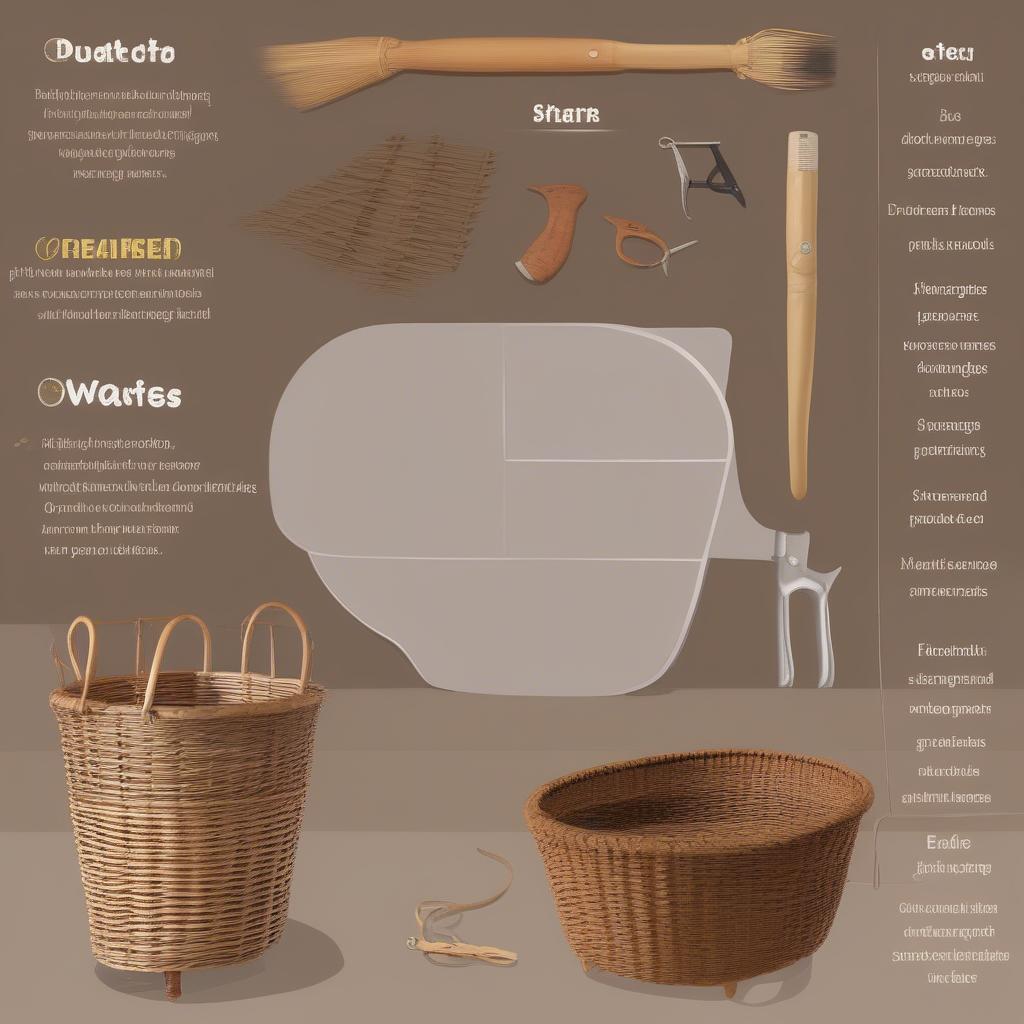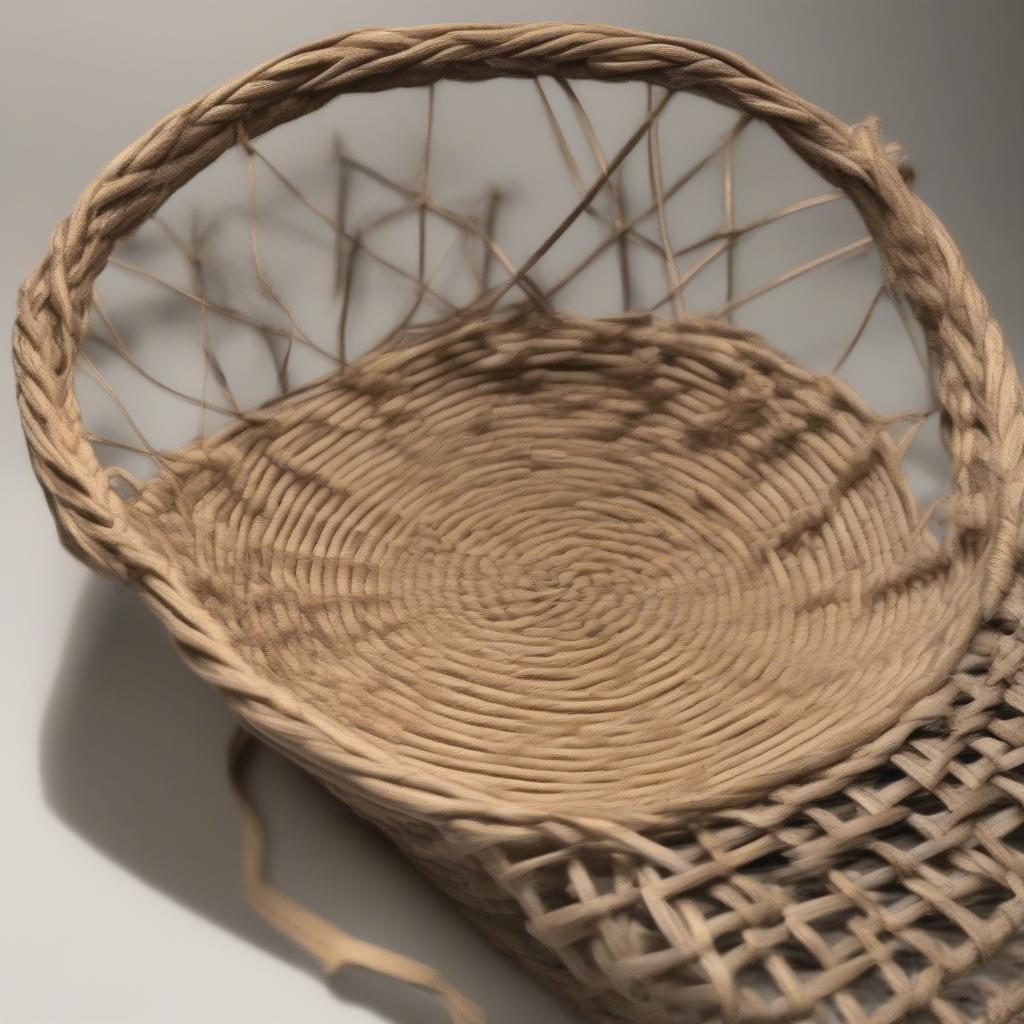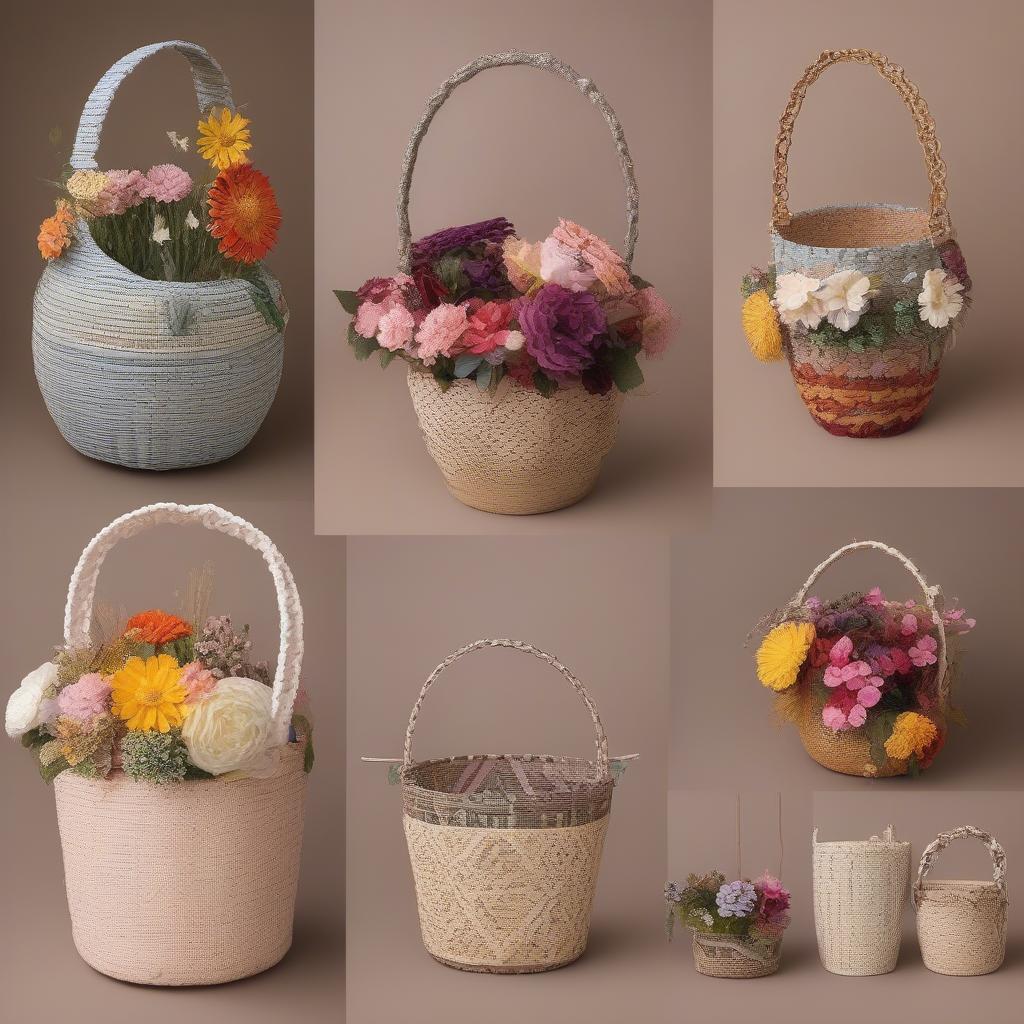Basket Weaving
How to Weave a Flower Basket
Learning How To Weave A Flower Basket is a rewarding craft that blends creativity with practicality. Whether you’re looking to create a unique gift, add a touch of rustic charm to your home, or simply enjoy the process of making something beautiful with your own hands, this guide will provide you with the foundational knowledge and steps to weave your own stunning flower basket. From choosing the right materials to mastering basic weaving techniques, we’ll explore everything you need to know to get started.
Choosing the Right Materials for Your Flower Basket
Before diving into the weaving process, it’s essential to select appropriate materials. The type of material you choose will affect both the aesthetic and durability of your flower basket. Popular choices include wicker, rattan, and reed. Wicker, known for its flexibility and strength, is ideal for beginners. Rattan, a more robust material, creates sturdy and long-lasting baskets. Reed, with its natural variations in color and texture, adds a unique touch. Consider the size and shape of your desired basket, the type of flowers you intend to display, and your personal preference when selecting your material.
 Essential Weaving Materials for Your Flower Basket
Essential Weaving Materials for Your Flower Basket
Preparing Your Materials for Weaving
Once you’ve chosen your materials, the next step is preparing them for weaving. Soaking the materials in warm water for about 30 minutes makes them pliable and easier to work with, preventing breakage during the weaving process. This step is crucial for both beginners and experienced weavers. After soaking, allow the materials to air dry slightly until they are damp but not dripping wet. This ensures the materials are flexible enough to bend and weave without cracking.
Basic Weaving Techniques for a Flower Basket
There are several basic weaving techniques to create the base and sides of your flower basket. The most common technique for beginners is the “randing” technique, which forms the circular base. Starting with a few spokes radiating outwards, you weave the material over and under these spokes to create a solid foundation. As you progress, you gradually add more spokes to increase the diameter of the base. Another common technique is “twining,” which is used to build up the sides of the basket. This involves twisting two or more strands of material together around the vertical spokes. Mastering these techniques is key to creating a well-structured and beautiful flower basket.
 Mastering the Basics of Basket Weaving
Mastering the Basics of Basket Weaving
Shaping and Finishing Your Flower Basket
Once you’ve woven the base and sides of your basket, you can begin shaping it to your desired form. Using your hands and simple tools, you can gently curve the sides inwards or outwards to create different styles. Adding a handle is a common choice for flower baskets, providing both functionality and aesthetic appeal. A flower basket weave chain can add a touch of elegance. After shaping, trimming any excess material and securing the ends are crucial finishing steps. These details ensure a neat and polished final product.
What are some common basket weaving mistakes to avoid?
Common mistakes include not soaking the materials properly, weaving too tightly or too loosely, and not securing the ends effectively. These can lead to a fragile basket or one that loses its shape over time. Patience and practice are key to improving your technique and avoiding these common pitfalls.
How can I add embellishments to my flower basket?
Adding embellishments, such as ribbons, beads, or charms, can personalize your flower basket and enhance its beauty. Basket weave flower vases can also be a great addition. Consider the colors and textures of your chosen materials when selecting embellishments to create a cohesive and visually appealing design.
Where can I find inspiration for flower basket designs?
Looking for inspiration? A heart shaped basket weave fliwer cake can offer a creative design. You can find inspiration for flower basket designs online, in books, or by observing nature itself. Exploring different shapes, sizes, and weaving patterns can spark your creativity and help you develop your own unique style. Don’t be afraid to experiment and try new things! A sweater weave wildflower basket is a great example of a unique design.
 Examples of Beautifully Crafted Flower Baskets
Examples of Beautifully Crafted Flower Baskets
Expert Insight from Emily Carter, Master Basket Weaver:
“The beauty of basket weaving lies in its simplicity and versatility. With a few basic techniques, you can create endless variations and personalize your creations to reflect your own unique style.”
Expert Insight from John Miller, Horticultural Designer:
“A hand-woven flower basket adds a touch of natural elegance to any setting. The texture and craftsmanship of the basket complement the beauty of the flowers, creating a harmonious and visually appealing display.”
Conclusion
Learning how to weave a flower basket is a journey of creativity and skill development. With patience and practice, you can transform simple materials into beautiful and functional works of art. Whether you’re a beginner or an experienced weaver, the satisfaction of creating something with your own hands is truly rewarding. So gather your materials, follow these steps, and begin your basket weaving adventure! Looking for a special occasion outfit? A basket weave flower girl dress might be just what you need!
FAQ
- What type of material is best for beginners? Wicker is a great option for beginners due to its flexibility.
- How long should I soak the materials before weaving? Soak the materials for approximately 30 minutes.
- What are the basic weaving techniques for a flower basket? Randing and twining are the most common basic techniques.
- How can I prevent my basket from becoming too fragile? Ensure you’re not weaving too tightly and secure the ends properly.
- Where can I find more resources on basket weaving? Numerous online tutorials, books, and workshops are available.
For further assistance, please contact us at Hanoi, Vietnam or Tech Avenue, Suite 12, San Francisco, CA 94105, USA. We have a 24/7 customer service team available to help.
